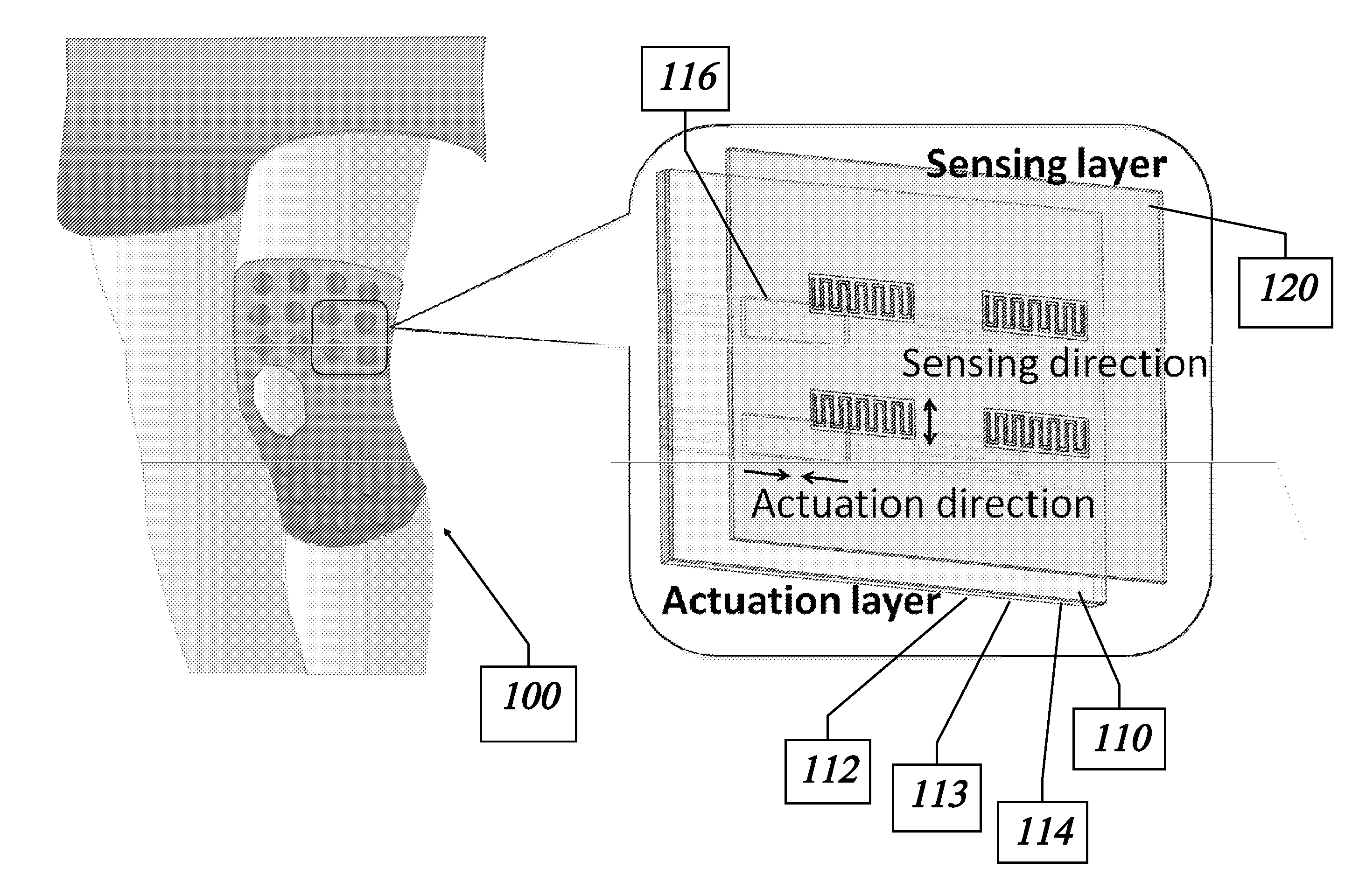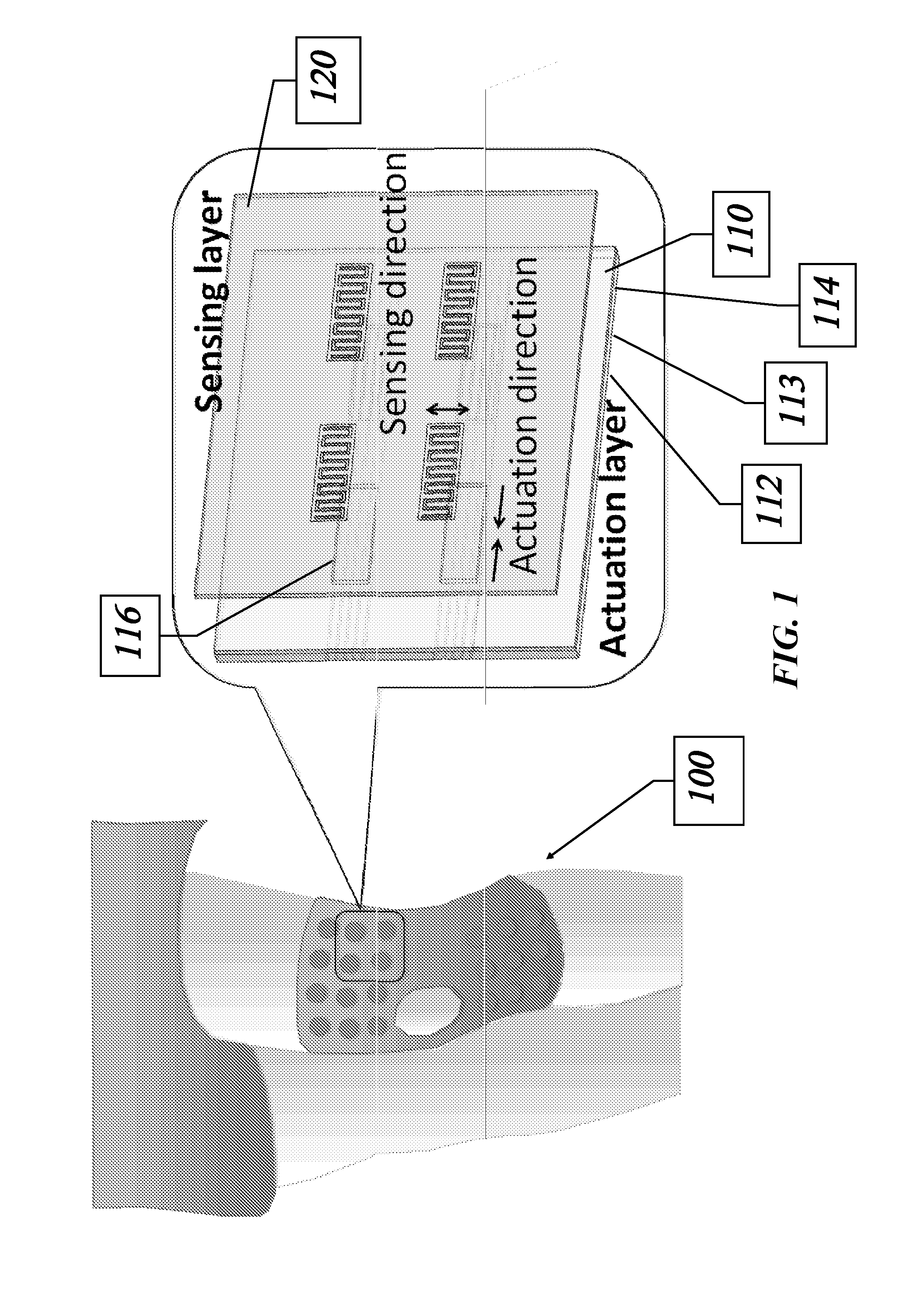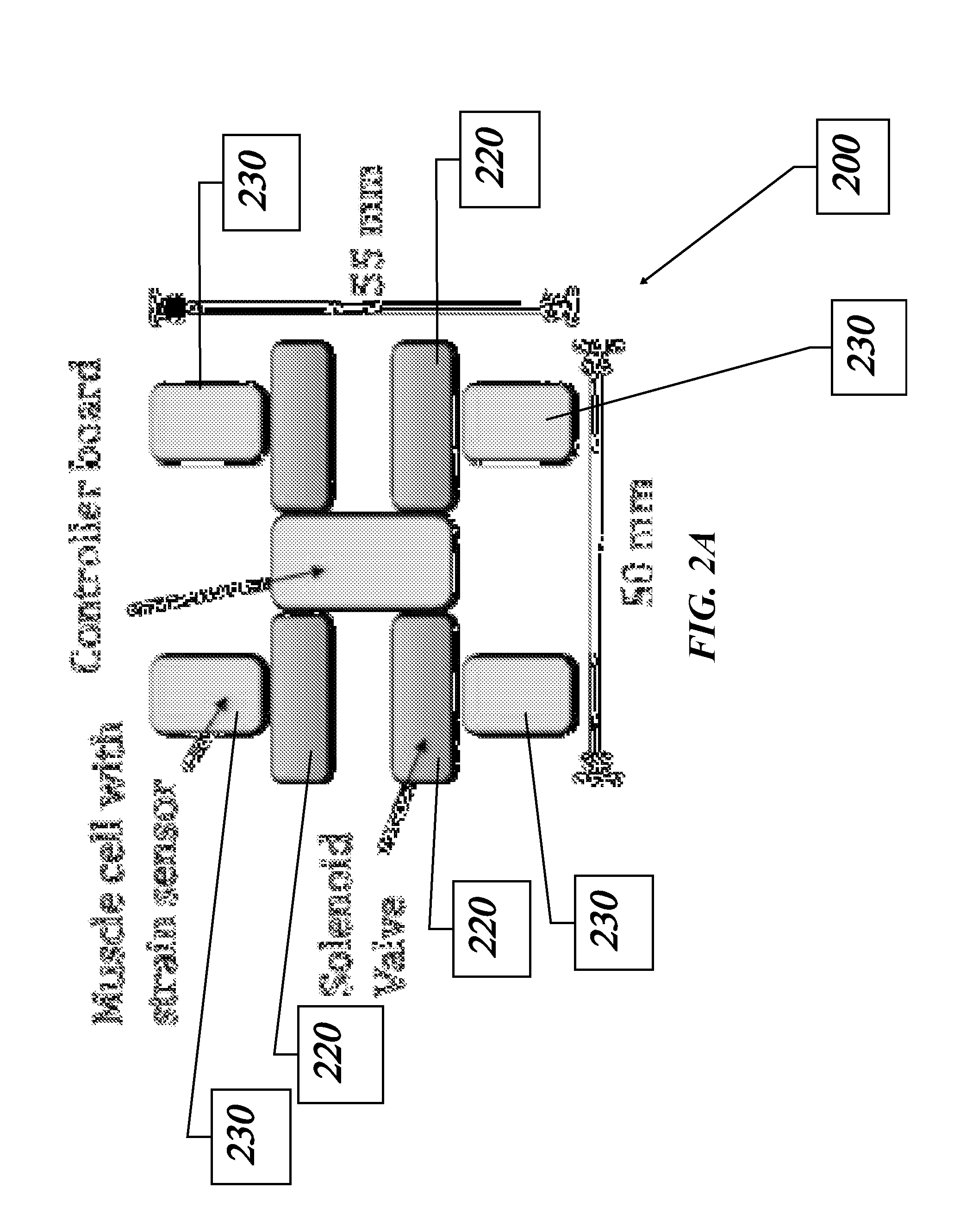Actively controlled wearable orthotic devices and active modular elastomer sleeve for wearable orthotic devices
a wearable orthotic device and active modular technology, applied in the field of active control wearable orthotic devices, can solve the problems of inability to map sensory information onto body motion, difficulty in producing large covariable sets of joints, stiff muscles, etc., and achieves the effects of restoring function, less muscular effort, and limited potential energy availabl
- Summary
- Abstract
- Description
- Claims
- Application Information
AI Technical Summary
Benefits of technology
Problems solved by technology
Method used
Image
Examples
Embodiment Construction
[0054]The present invention is directed to an orthotic device formed from a plurality of active components and a method of controlling each of the active components to cause the orthotic device to move providing resistance and assistance to motion by a subject wearing the orthotic device. In accordance with the invention, the orthotic device includes an array of active components, each including at least one control element and the control element of at least two active components being in communication with each other to enable coordinated movements of the two active components.
[0055]FIG. 1 shows a second skin orthotic device 100 according to one embodiment of the present invention. In this embodiment, the orthotic device 100 can be formed in layers and including an actuation layer 110 and a sensing layer 120 bonded to the actuation layer 110. The actuation layer 110 can include two or more layers of flexible material such as silicone or natural rubber selectively bonded together f...
PUM
 Login to View More
Login to View More Abstract
Description
Claims
Application Information
 Login to View More
Login to View More - R&D
- Intellectual Property
- Life Sciences
- Materials
- Tech Scout
- Unparalleled Data Quality
- Higher Quality Content
- 60% Fewer Hallucinations
Browse by: Latest US Patents, China's latest patents, Technical Efficacy Thesaurus, Application Domain, Technology Topic, Popular Technical Reports.
© 2025 PatSnap. All rights reserved.Legal|Privacy policy|Modern Slavery Act Transparency Statement|Sitemap|About US| Contact US: help@patsnap.com



